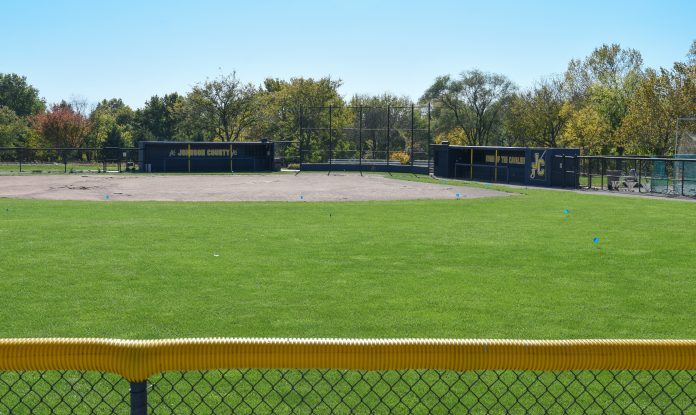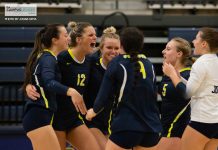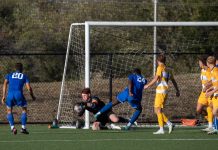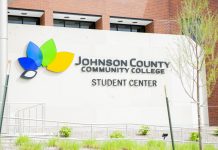
Alessandro DeBrevi
Staff reporter
adebrevi@jccc.edu
Maintaining the athletics fields at the college is an arduous process that requires year-round work. The grounds crew at the college works on the campus’ various fields and courses multiple times throughout the week.
Their work on the soccer field usually consists of checking for weeds, adjusting irrigation systems and maintaining proper moisture content. The field is also mowed twice a week and striped once or twice during the season.
John Ingold, lead groundskeeper, said each field has areas that require specific attention.
“For a soccer field, in front of the goals,” Ingold said. “That’s a tough area to do and sometimes down the center of the field.”
Ingold said that one of their strategies is prevention when the field is not being used.
“We try to keep people off of [the soccer fields] and we try to have movable goals,” Ingold said.
The areas that are used the most require the most attention.
“On baseball and softball, of course, around home plate because it’s the most used and the pitching mound,” Ingold said. “First base and then a little bit less on second, little bit less on third because they’re not there that much.”
The softball field requires 20 to 30 hours of work early in the season. After that, Ingold said, it only requires basic maintenance as the season goes along.
Ingold said the most challenging aspect of the sprawling cross country course is mowing it the first time. The grounds crew has specific measurements that they maintain on the course.
“I try to get it lower than the outside grass,” Ingold said. “We try to keep that grass out there about 4 inches. So I try to do [the course] at about [2.5 inches].”
Maintaining the cross country course is especially important because it is not only used by the college, but also by local high schools.
“[The cross country course] is being used a lot more than what it used to,” Ingold said. “We only used to have two or three [meets] a year and this year we’ve got 11 of them.”
Unexpected and extended periods of inclement weather pose the biggest threats to the field. The crew is usually able to prepare the fields for play but on rare occasions there is nothing they can do and a game will be canceled.
“There are ways to dry it out,” Ingold said. “Sometimes you [have to] go to the extreme to do it but we try to get all our games in here.”
Precipitation is not the only threat to the fields.
“Probably the biggest thing that can hurt an athletic field is a lot of wind for a long time,” Ingold said.
With the temperature dropping and winter right around the corner, the weather can determine the crew’s strategy during the season.
“[It all] depends on when the first frost is,” Ingold said.
Winter can actually be a good time for the fields, as the icy elements can provide the grass with a natural insulator.
“Snow actually helps [the fields] out. Snow actually protects [the fields],” Ingold said. “When the snow melts … the water can soak into the soil.”
Upcoming changes to the campus will directly affect the grounds crew and the maintenance of the fields.
Shortly after the conclusion of the track and field season in mid-to-late May, the college will start the process of co-locating the athletic fields on campus. This will involve removing the track and replacing it with a softball and a soccer field in that space. Both fields will have artificial turf.
This is all part of a facilities master plan study that was completed 6 months ago
“It was our desire to co-locate our spectator sports because there are a lot of times that we have [multiple] events at the same time,” said Randy Weber, vice president of Student Success and Engagement.
This will make it easier for the college to provide a more complete sporting experience with seating, restrooms and concessions.
While both the track and field and cross country programs are being discontinued, the cross country course will remain on campus. The college plans on maintaining the partnerships with numerous high schools and middle schools who use the course.
The college currently has quite a few rentals of the fields, but the project will look to increase these numbers.
“We anticipate with what we’re doing we might have an opportunity to increase community usage and rentals,” Weber said. “That’s part of the justification for the overall project.”
Weber emphasised that by co-locating the fields the college will be able to improve community relations because the athletic facilities help connect members of the community who only come to the campus for sports.
Weber said, “This project will allow us to grow those even more, so we are pretty excited about that.





















